Abstract
Some properties of the cell-free and cell-associated hemolysins of Escherichia coli were studied. Several strains of E. coli that were isolated from intestines of pigs with edema disease produce large quantities of cell-free hemolysin when grown in the presence of an extract of meat. The component of meat that stimulates production of cell-free hemolysin is not extracted by lipid solvents and is not dialyzable. The cell-free hemolysin is an acidic substance that occurs in two forms. It is inactivated by trypsin but not by lecithinase, lysozyme, ribonuclease, or deoxyribonuclease, shows optimum activity between pH 7 and 8, and requires calcium ion for activity. It does not appear to be an enzyme. The kinetics of the lytic reaction are most consistent with the hypothesis that one molecule of cell-free hemolysin is sufficient to lyse one erythrocyte and that it is inactivated in the lytic reaction. The cell-free hemolysin does not sufficiently damage the cell during the prelytic period to cause lysis after the hemolysin-calcium-erythrocyte complex has been disrupted. The cell-associated hemolysin was not separated from the cell by autolysis, freezing, sonic treatment, or treatment with trypsin or lysozyme. It appears to be closely associated with the metabolic status of the cell. Organisms that are highly hemolytic under usual conditions of assay immediately lose most of their hemolytic capability in the presence of sodium cyanide, streptomycin, nalidixic acid, and rifampin.
Full text
PDF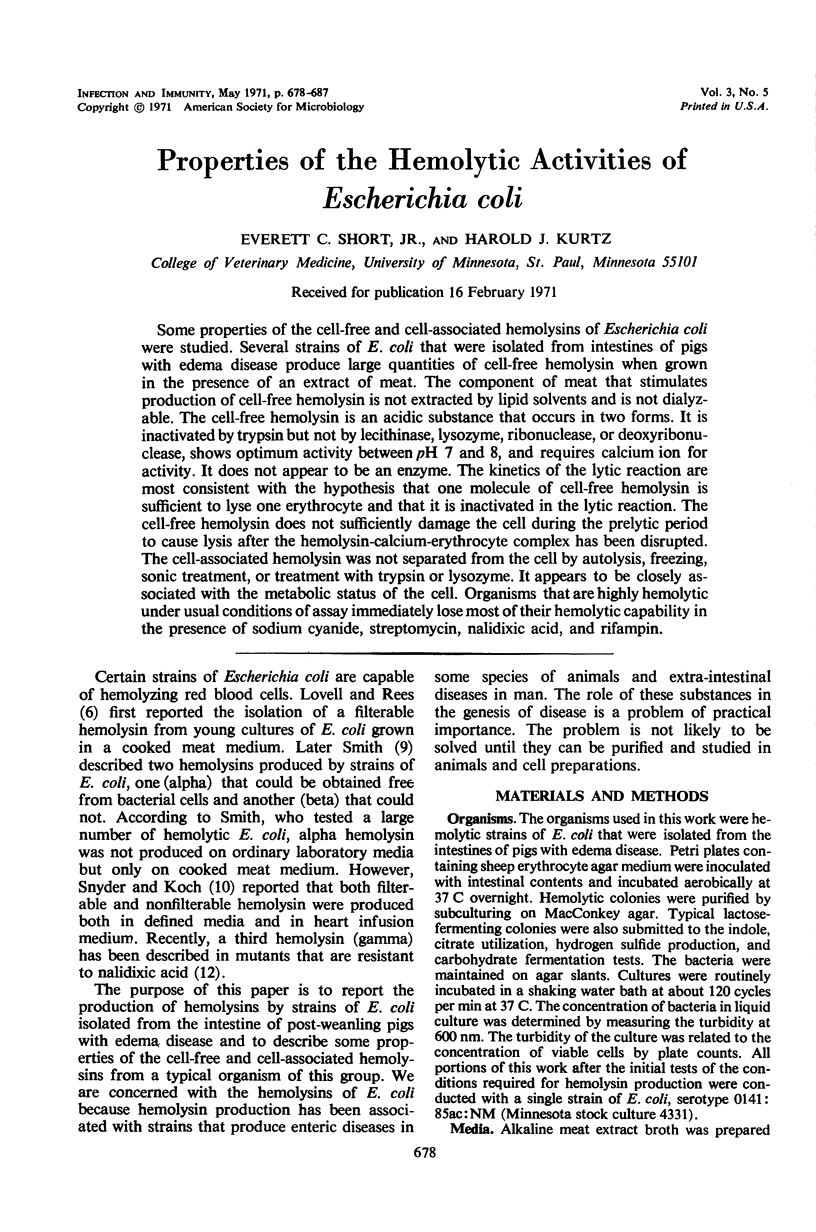
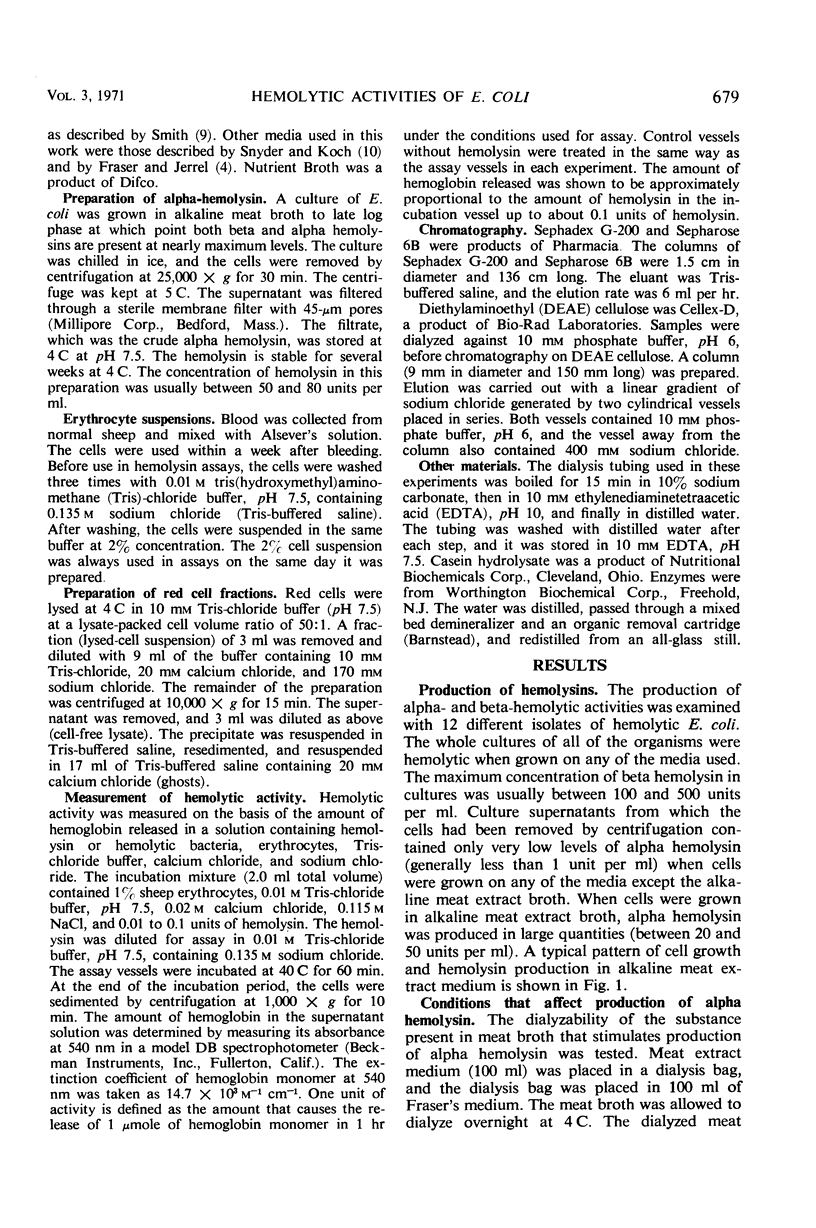

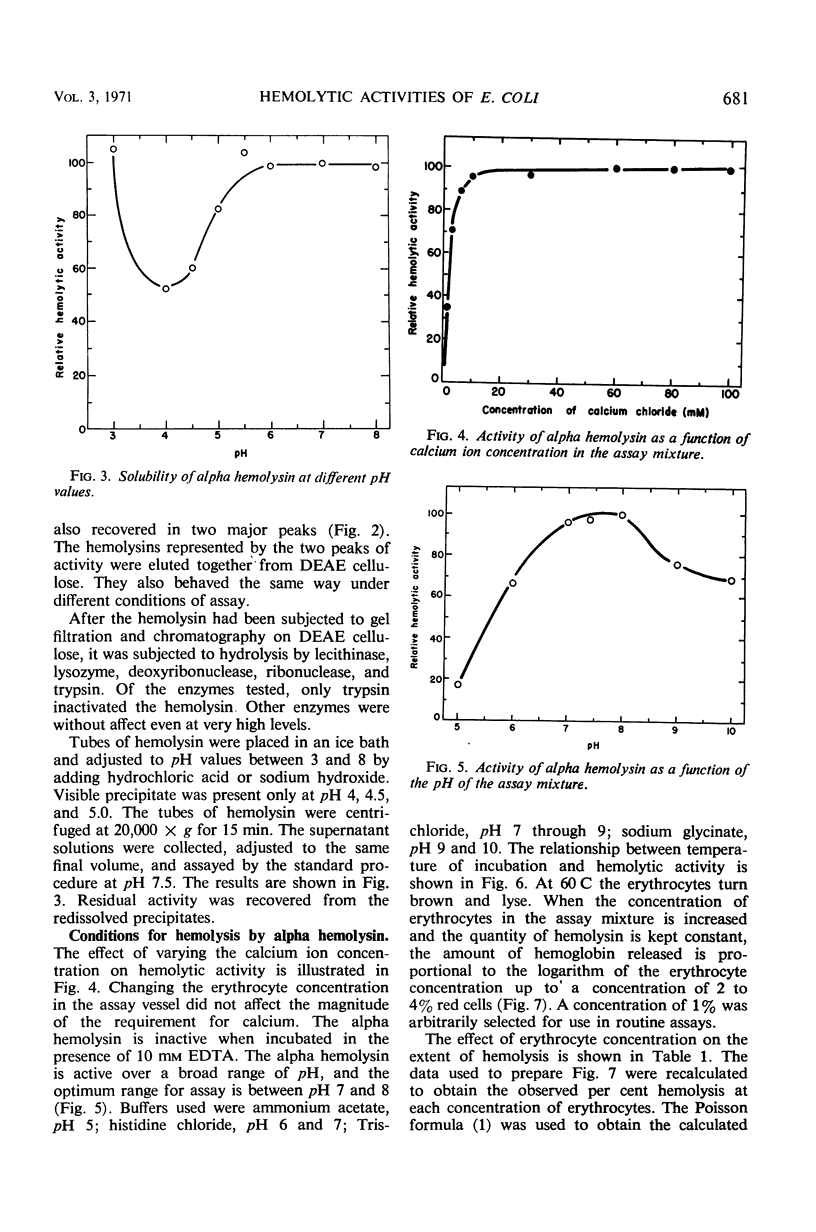
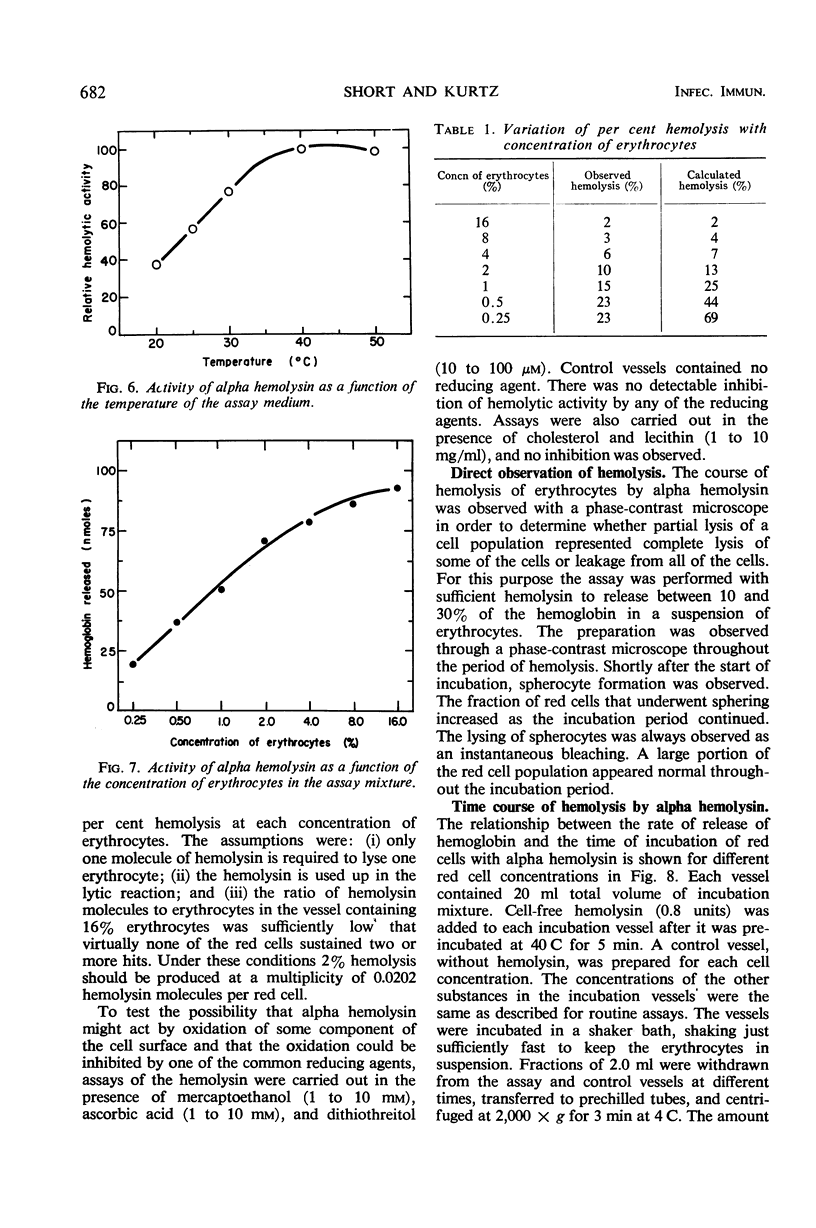
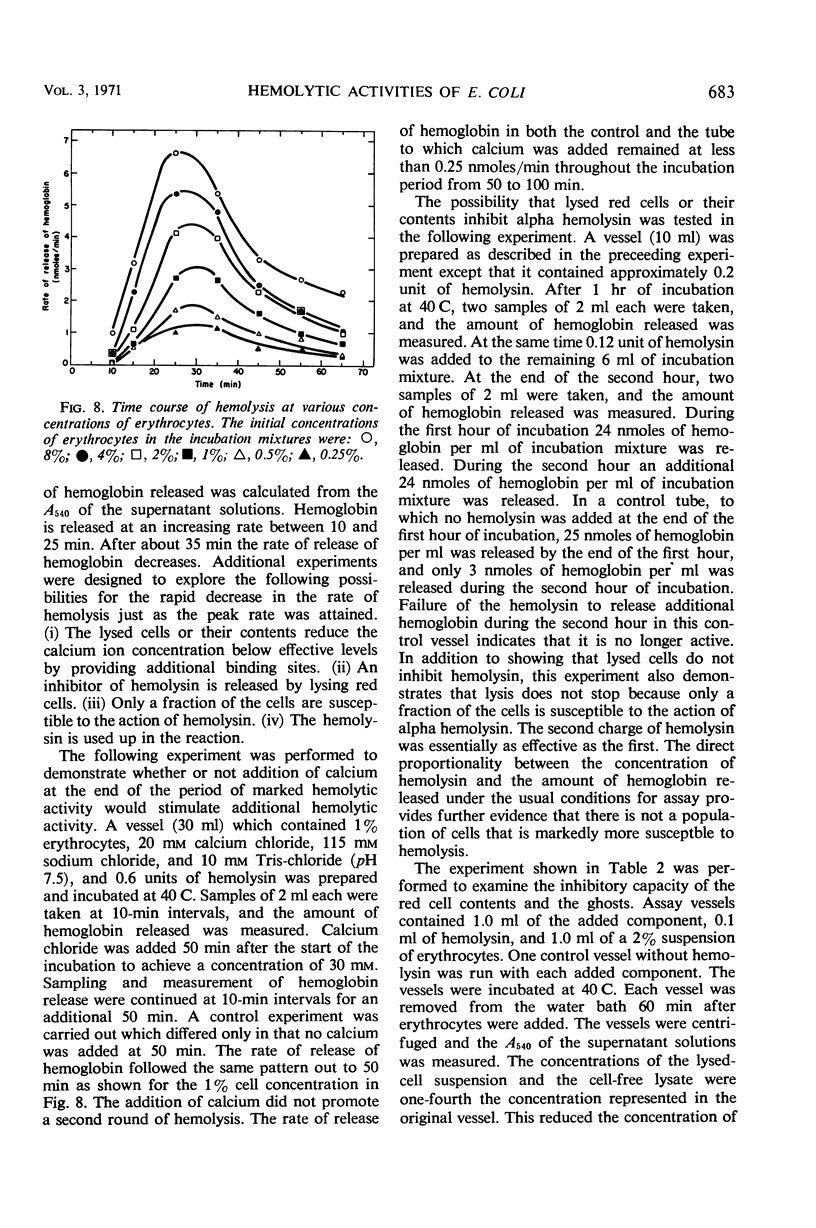
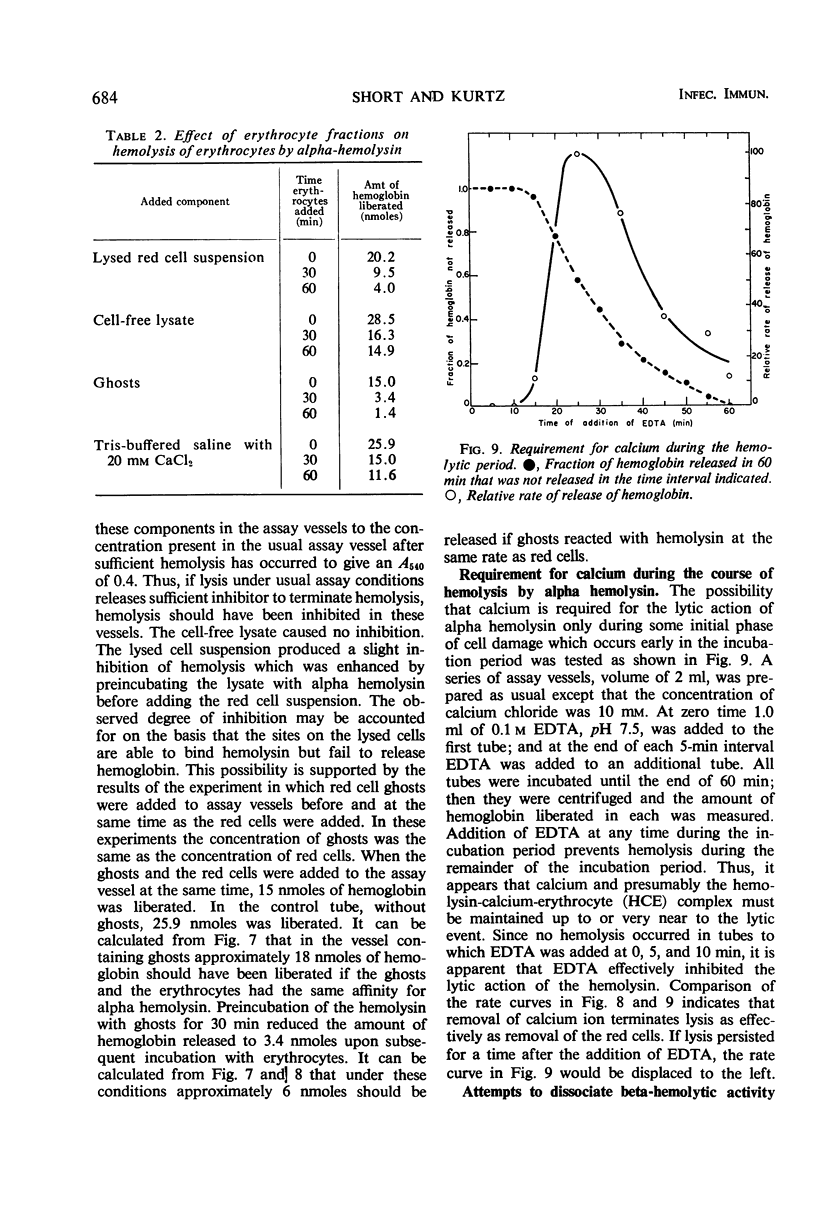
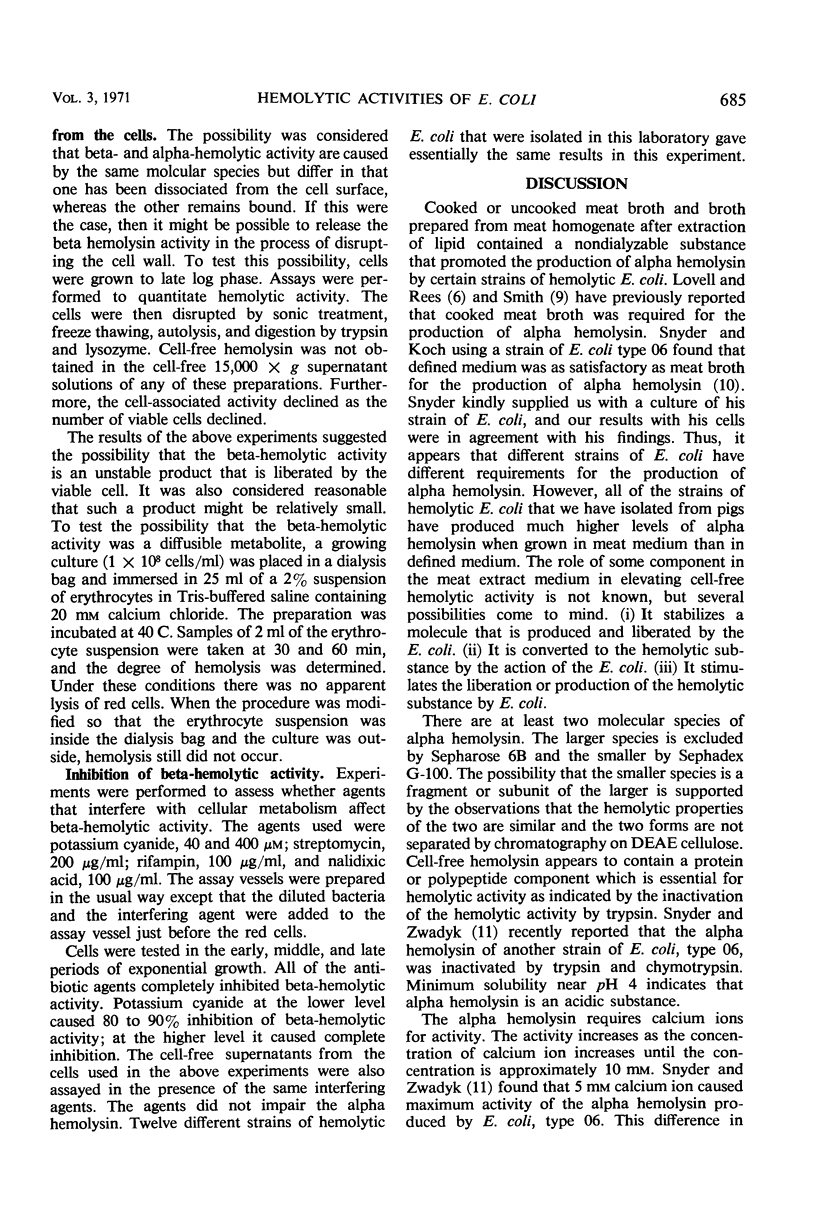
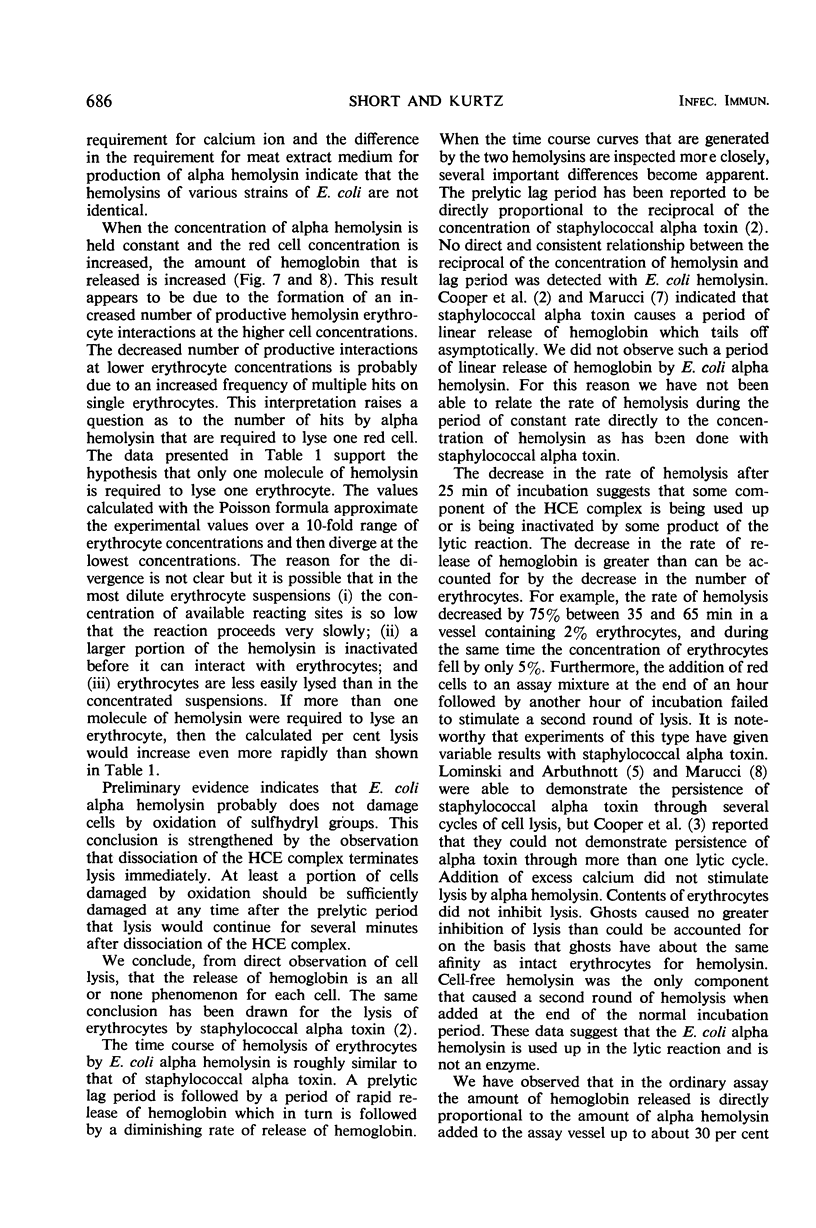
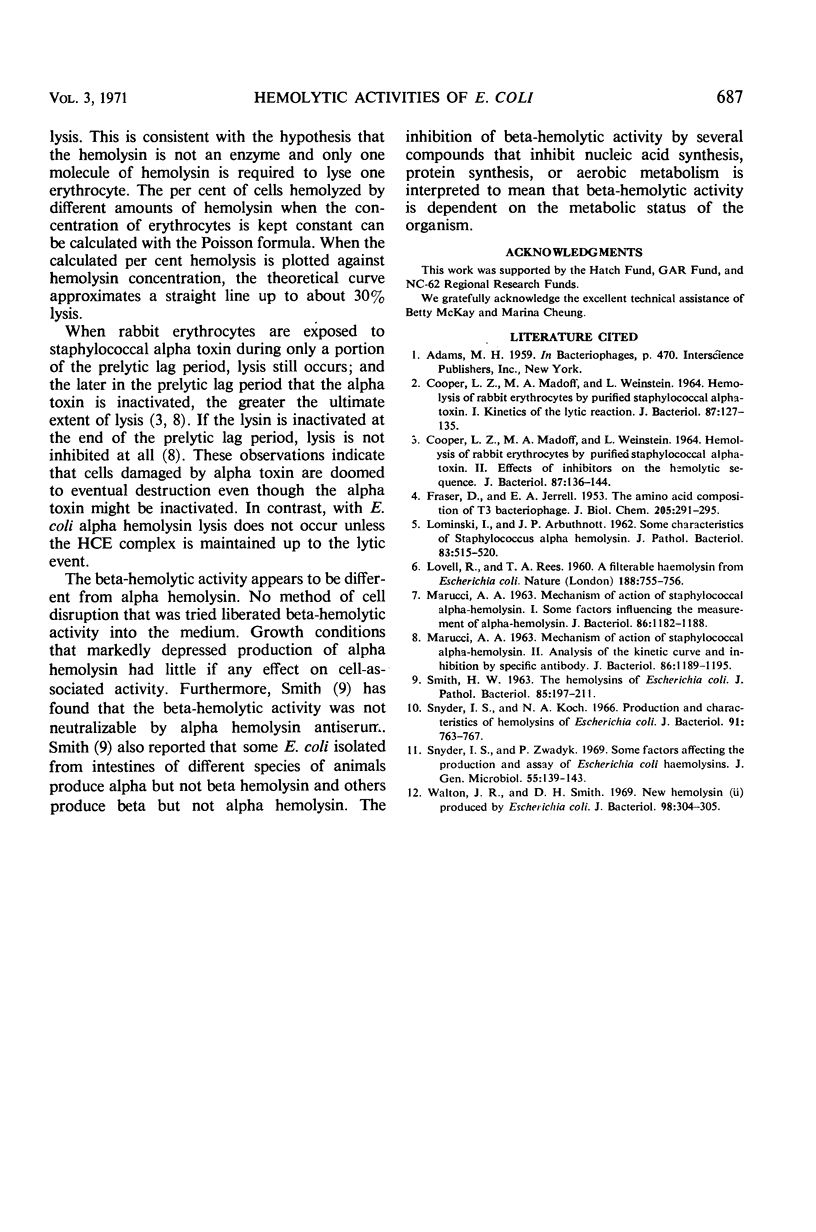
Selected References
These references are in PubMed. This may not be the complete list of references from this article.
- COOPER L. Z., MADOFF M. A., WEINSTEIN L. HEMOLYSIS OF RABBIT ERYTHROCYTES BY PURIFIED STAPHYLOCOCCAL ALPHA-TOXIN. I. KINETICS OF THE LYTIC REACTION. J Bacteriol. 1964 Jan;87:127–135. doi: 10.1128/jb.87.1.127-135.1964. [DOI] [PMC free article] [PubMed] [Google Scholar]
- COOPER L. Z., MADOFF M. A., WEINSTEIN L. HEMOLYSIS OF RABBIT ERYTHROCYTES BY PURIFIED STAPHYLOCOCCAL ALPHA-TOXIN. II. EFFECTS OF INHIBITORS ON THE HEMOLYTIC SEQUENCE. J Bacteriol. 1964 Jan;87:136–144. doi: 10.1128/jb.87.1.136-144.1964. [DOI] [PMC free article] [PubMed] [Google Scholar]
- FRASER D., JERREL E. A. The amino acid composition of T3 bacteriophage. J Biol Chem. 1953 Nov;205(1):291–295. [PubMed] [Google Scholar]
- LOMINSKI I., ARBUTHNOTT J. P. Some characteristics of Staphylococcus alpha haemolysin. J Pathol Bacteriol. 1962 Apr;83:515–520. [PubMed] [Google Scholar]
- LOVELL R., REES T. A. A filterable haemolysin from Escherichia coli. Nature. 1960 Nov 26;188:755–756. doi: 10.1038/188755b0. [DOI] [PubMed] [Google Scholar]
- MAARUCCI A. MECHANISM OF ACTION OF STAPHYLOCCAL ALPHA-HEMOLYSIN. II. ANALYSIS OF THE KINETIC CURVE AND INHIBITION BY SPECIFIC ANTIBODY. J Bacteriol. 1963 Dec;86:1189–1195. doi: 10.1128/jb.86.6.1189-1195.1963. [DOI] [PMC free article] [PubMed] [Google Scholar]
- MARUCCI A. A. MECHANISM OF ACTION OF STAPHYLOCOCCAL ALPHA-HEMOLYSIN. I. SOME FACTORS INFLUENCING THE MEASUREMENT OF ALPHA-HEMOLYSIN. J Bacteriol. 1963 Dec;86:1182–1188. doi: 10.1128/jb.86.6.1182-1188.1963. [DOI] [PMC free article] [PubMed] [Google Scholar]
- SMITH H. W. The haemolysins of Escherichia coli. J Pathol Bacteriol. 1963 Jan;85:197–211. doi: 10.1002/path.1700850119. [DOI] [PubMed] [Google Scholar]
- Snyder I. S., Koch N. A. Production and characteristics of hemolysins of Escherichia coli. J Bacteriol. 1966 Feb;91(2):763–767. doi: 10.1128/jb.91.2.763-767.1966. [DOI] [PMC free article] [PubMed] [Google Scholar]
- Snyder I. S., Zwadyk P. Some factors affecting production and assay of Escherichia coli haemolysins. J Gen Microbiol. 1969 Jan;55(1):139–143. doi: 10.1099/00221287-55-1-139. [DOI] [PubMed] [Google Scholar]
- Walton J. R., Smith D. H. New hemolysin (gamma) produced by Escherichia coli. J Bacteriol. 1969 Apr;98(1):304–305. doi: 10.1128/jb.98.1.304-305.1969. [DOI] [PMC free article] [PubMed] [Google Scholar]


